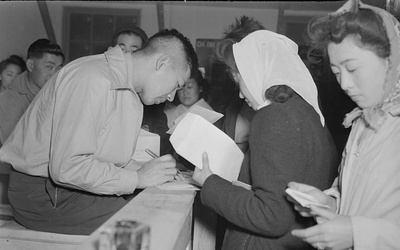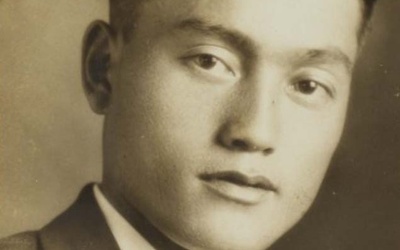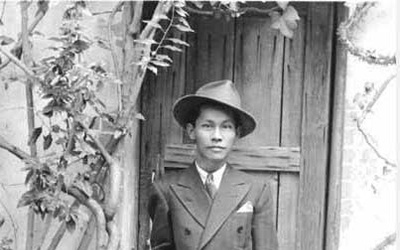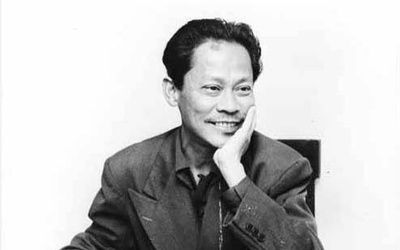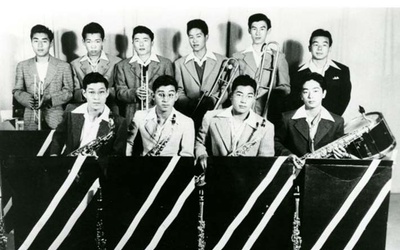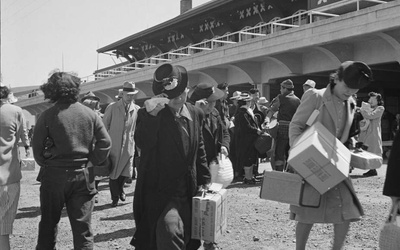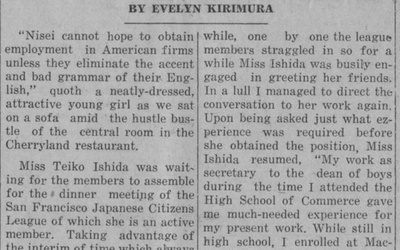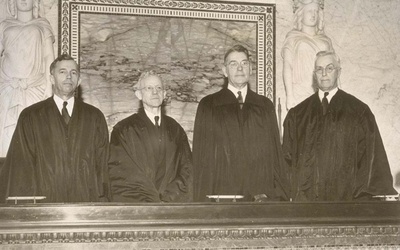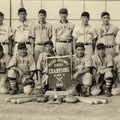
Jonathan van Harmelen
@jonathanJonathan van Harmelen is currently a Ph.D student in history at UC Santa Cruz specializing in the history of Japanese-American incarceration. He holds a BA in history and French from Pomona College and an MA from Georgetown University. He can be reached at jvanharm@ucsc.edu.
Updated February 2020
Stories from This Author
The Woes of Voting in Camp in 1942
Nov. 25, 2022 • Jonathan van Harmelen
In every election, the question of voter turnout poses a serious challenge. On innumerable occasions, the problem has been aggravated due to legislators’ attempts to restrict access to voting, often targeting minority voters. In the Jim Crow South, the imposition of poll taxes and literacy tests long served to prevent African Americans from voting. Eighty years ago, in both the elections of 1942 and 1944, Japanese Americans confined behind barbed wire fences faced particular hurdles in order to exercise their …
Yukuo Uyehara – An Issei Academic in Wartime - Part 2
Oct. 27, 2022 • Jonathan van Harmelen
Read Part 1 >> The bombing of Pearl Harbor turned Professor Yukuo Uyehara’s life around, as it did to countless other Japanese Americans in Hawaii. In the wake of the attack, the FBI arrested dozens of Issei community leaders. Uyehara remained free and continued his work as an instructor at University of Hawaii, although he held the status of “enemy alien.” In September 1942, Uyehara was added to a directory of leading scholars in the United States for his work …
Yukuo Uyehara – An Issei Academic in Wartime - Part 1
Oct. 26, 2022 • Jonathan van Harmelen
Before U.S. entry in World War II, a small group of Japanese immigrants found work as academics in American universities. A few, such as Yamato Ichihashi of Stanford University, Toyokichi Iyenaga of University of Chicago, were prestigious researchers who conducted pioneering work on Japan and/or prewar Japanese American communities. Others, like Etsu Sugimoto and Bunji Omura, supplemented their income by teaching at universities like Columbia University, where they provided introductory courses in Japanese language and culture to students. Within this …
A Heart to Heart: Carlos Bulosan and Japanese Americans - Part 2
Sept. 23, 2022 • Jonathan van Harmelen , Greg Robinson
Read Part 1>> In our previous section, we discussed Carlos Bulosan’s biography and his rise to success as an Asian American writer during the war years. While Bulsan wrote as a representative of Philippine Americans and centered his discussion on the experience of Pinoy workers, he showed a deep interest in other Asian American groups, particularly Japanese Americans. At a time when tensions were high between Filipino and Japanese Americans due to the Pacific War, Bulosan expressed feelings of friendship, …
A Heart to Heart: Carlos Bulosan and Japanese Americans - Part 1
Sept. 22, 2022 • Jonathan van Harmelen , Greg Robinson
One of the first and most gifted writers to express an Asian American consciousness was Carlos Bulosan. Bulosan’s experience as a migrant laborer from the Philippines to the U.S. and his travels along the California coast during the era of the Great Depression inspired his work, most notably his autobiographical novel America is in the Heart (1946). The novel introduced the experience of Filipino migrants to American audiences. Bulosan’s incisive portraits of migrant farmworkers provided one of the first accounts …
Kamisama of the Club — Jazz Player James Araki and Bebop in Japan
Sept. 13, 2022 • Jonathan van Harmelen
If there was a sound that defined United States history, it would be jazz. As Amiri Baraka stated in his landmark book Blues People, jazz’s history is intertwined with the black experience from enslavement, emancipation, segregation, and eventually on to migration to cities. Rooted in the Blues and the African American gospel, and drawing from European classical music and other musical traditions, jazz emerged at the beginning of the 20th century as a cornerstone of American identity at home and …
A Day at the Racetrack: Kenneth Rexroth’s Support for Japanese Americans During World War II
Aug. 28, 2022 • Jonathan van Harmelen
Kenneth Rexroth (1905-1982) is, in many ways, California’s poet. Although born in Indiana and having spent most of his young adult years in Chicago, Rexroth left for California at age 22, and spent the remainder of his life there. During those subsequent fifty-five years, Rexroth embarked on an ambitious career as a poet, painter, and political activist, living the first half of his California years in San Francisco and his later years in Santa Barbara, where he was a professor …
Teiko Ishida – A Woman of Conviction in the JACL — Part 2
Aug. 11, 2022 • Jonathan van Harmelen
Read Part 1 >> In September 1943, the Japanese American Citizens League announced that Mike Masaoka, George Inagaki, JACL membership director, and Joe Kanazawa, the JACL’s Eastern Representative, had enlisted in the U.S. Army and left their JACL positions. The JACL then selected Ishida as acting National Secretary for the east, and sent her to open a new office at 299 Madison Ave. in New York City. (For a time Ishida, along with the Tajiris, was the JACL’s only paid …
Teiko Ishida – A Woman of Conviction in the JACL — Part 1
Aug. 10, 2022 • Jonathan van Harmelen
For most of its history, the leadership of the JACL has been composed largely of men. Figures such as Mike Masaoka, Saburo Kido, and Clifford Uyeda defined the various eras of the JACL’s existence, and it was not until the election of Lillian Kimura in 1992 that the JACL had a woman president. Still, from its earliest days, the JACL has been shaped by the contributions of women. In the early 1930s lobbyist Suma Sugi almost singlehandedly won repeal of …
William Denman: A Voice of Dissent on the Courts - Part 2
June 9, 2022 • Jonathan van Harmelen
Read Part 1 >> Throughout the war years, Denman would cross swords with DeWitt and the Western Defense Command in the test cases against the wartime exclusion of Japanese Americans. The first major case to approach the bench of the 9th Circuit, however, was the lawsuit Regan vs. King. Spearheaded by the Native Sons of the Golden West, who were represented by former California attorney general and noted anti-Asian activist Ulysses S. Webb, the lawsuit’s goal was to prevent Nisei …

